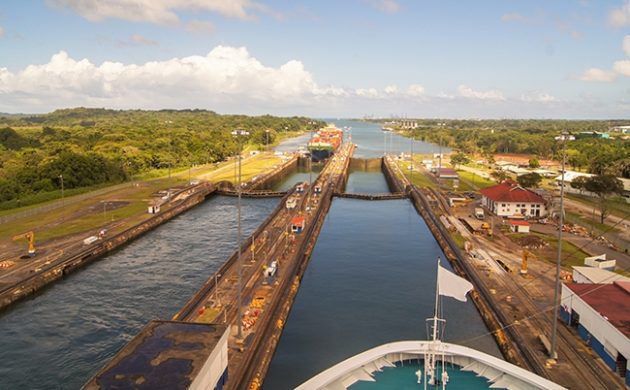
Canada’s Arctic defence policy update: All flash, no bang
by Paul T. Mitchell, Professor of Defence Studies, Canadian Forces College
Within the Department of National Defence, hopes were high that the government might announce something major, perhaps even a commitment to replace the Navy’s four Victoria-class submarines.

PHOTO: Getty Images/onlymehdi
The Canadian government’s recent defence policy update, Our North: Strong and Free, was recently released with considerable fanfare. Promised for a year, the delay seemed to indicate the Liberal government’s budgetary pressures given the ballooning deficit.
In the end, it was more heat than light and was less of an update to address a worsening international security environment than a simple restatement of traditional approaches to Canada’s defence.
Announced by a joint team of the prime minister, deputy prime minister and both the defence and veterans affairs ministers — with a backdrop framed by Royal Canadian Air Force aircraft at CFB Trenton — the government went to considerable effort to portray this policy as a marked change in direction for Canada.
Arctic focus
In particular, the update squarely focuses on Canada’s North.
Previous policies — like Brian Mulroney’s 1987 white paper, Challenge and Commitment and Stephen Harper’s 2008 Canada First Defence Strategy — had strong Arctic themes, but this one puts the emphasis right in the title.
Within the Department of National Defence, hopes were high that the government might announce something major, perhaps even a commitment to replace the Navy’s four Victoria-class submarines.
Canada has been under significant international pressure to boost its defence spending. While historically this has been true since the 1970s, Prime Minister Justin Trudeau’s admission last year that Canada would never meet its promised NATO commitment to spend two per cent of its GDP on defence has caused that pressure to intensify.
Certainly, the numbers announced look impressive: $8.1 billion in the next five years and $73 billion over the next 20 years. However, even these figures are not enough to push Canada beyond 1.76 per cent, and then only by 2029-30.
At odds with reality?
Deputy Prime Minister Chrystia Freeland’s remarks during the official release of the policy were especially noteworthy given her statement in 2017, as minister of global affairs, when she announced to Parliament:
“To rely solely on the U.S. security umbrella would make us a client state. And although we have an incredibly good relationship with our American friends and neighbours, such a dependence would not be in Canada’s interest. That is why doing our fair share is clearly necessary. It is why our commitment to NORAD, and to our strategic relationship with the United States, is so critical. It is by pulling our weight in this partnership, and in all our international partnerships, that we, in fact, have weight.”
And yet, despite the advances made in 2017’s Strong, Secure and Engaged policy update, Canada’s allies have complained it’s failing to pull its weight — most vocally former U.S. president Donald Trump, but others as well.
Freeland reiterated her 2017 words at the CFB Trenton event, noting:
“If middle powers are not prepared to stand up for — and if necessary, fight for — peace and stability around the world, the rules of the game, including international borders, will be left for the great powers to determine between themselves …. And that, most certainly, would not be good for Canada and Canadians. We cannot be at the mercy of decisions made without us in foreign capitals.”
But the 20-year timeline of the new policy, and the fact that so many of the proposed investments are “to be explored,” give considerable cause for concern about whether Canada has truly decided to pull its weight.
Vague priorities
The update continues to emphasize the same bland and unspecific priorities of past white papers: Canada, continental defence and contributions to international peace and security.
At a moment when, as Trudeau once put it, “the world needs more Canada,” the country’s defence strategy fails to articulate any of the hard choices facing a middle power with a tiny military in a world of spiralling threats. A bolder policy might have decided to do less with more.
The update perpetuates Canada’s antiquated “fire-proof house” mentality. In 1924, Liberal politician Raoul Dandurand famously said “Canada is a fire-proof house, far removed from flammable materials,” putting into words Canada’s approach to defence since 1867. Simply put, three oceans and a superpower sufficiently shield us from having to concern ourselves with national security.
How else to explain the federal government’s apparent acceptance that the ongoing personnel crisis racking the Canadian Armed Forces will not be fully addressed until the next decade?
Only by assuming that geography continues to provide Canada sanctuary from military conflict.
Canada also appears to be emulating something like the infamous “10-year rule” that permitted Britain to underfund its military apparatus in the build-up to the Second World War.
Lackadaisical, feckless
Military strategy has often been an afterthought in Canada.
With apologies to Freeland, that is in fact a result of Canada’s “client” status, at first to Great Britain and then to the U.S. In lieu of independent thinking, we have defaulted to the direction provided by London, Washington, the United Nations and NATO.
But the old certainties of the British and American empires or the much-vaunted rules-based international order are all fading fast.
The notion that bad things only happen elsewhere is at the heart of a lackadaisical and feckless approach to threats that are building daily around the world — and is evident in a vague policy update that won’t see the culmination of its objectives until long into the future.
This article is republished from The Conversation under a Creative Commons license. Read the original article.